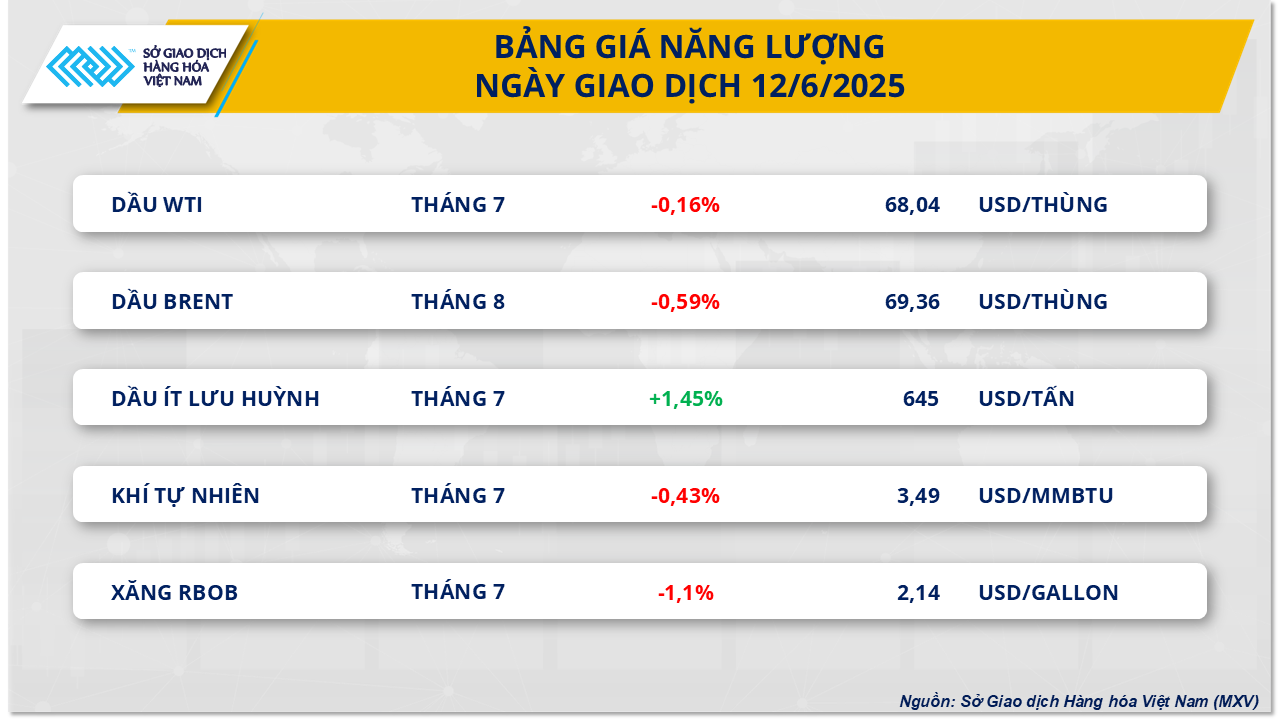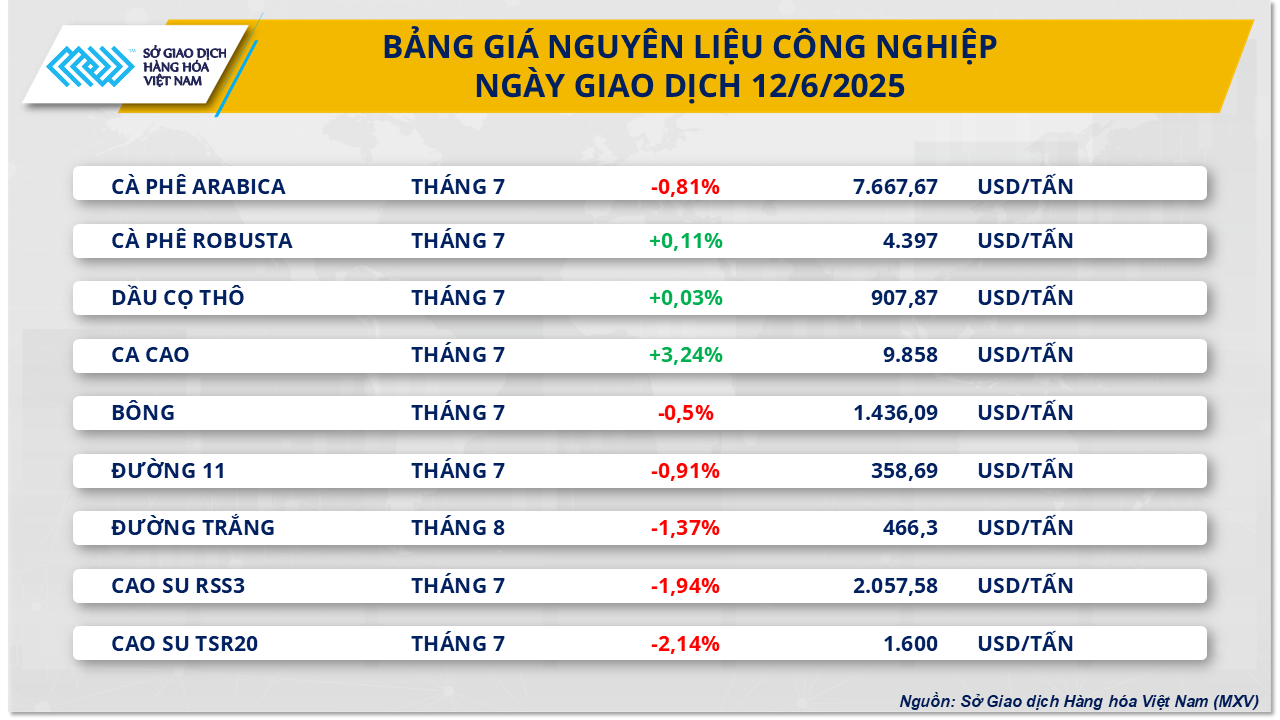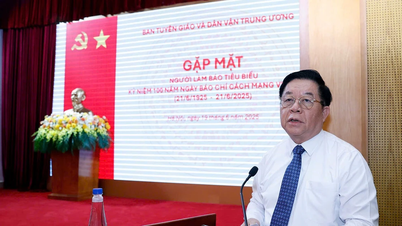In the energy market, at the end of yesterday's trading session, cautious sentiment prevailed in the energy market as investors reassessed the impact of complex geopolitical developments in the Middle East.
Closing, Brent oil price decreased by 0.59%, down to 69.36 USD/barrel; while WTI oil price also recorded a slight decrease of 0.16%, stopping at 68.04 USD/barrel.
The relationship between the US and Iran over Tehran's controversial nuclear program remains tense. In his latest statement, US President Donald Trump said that an Israeli airstrike on Iran is entirely possible; however, he still called for resolving disagreements through negotiations.
Earlier, disagreements surrounding Iran's uranium enrichment activities and the withdrawal of personnel from some Middle Eastern countries, especially from the US, caused oil prices to surge more than 4% in the trading session on June 11. According to analyst Alex Hodes at StoneX Energy, this sharp increase has put the market in overbought territory based on some technical indicators, so there is a possibility that the market had a short technical correction yesterday.
The US and Iran will still participate in the sixth round of negotiations scheduled for Sunday, June 15 in Oman. Currently, concerns about the risk of Iran becoming a new hotspot in the Middle East are still on the market, especially when this could lead to the possibility of closing the Strait of Hormuz south of the country, a very important import and export gateway.

Indicators on the health of the world's largest economy released yesterday did not bring more optimistic signals to the market. The producer price index (PPI) group in May mostly decreased slightly; while the number of applications for unemployment benefits increased last week. This information raised concerns about the macroeconomic situation in the US, followed by concerns about energy consumption demand in the world's largest economy. However, on the contrary, some investors expect this situation will cause the US Federal Reserve (FED) to cut interest rates to stimulate the economy.
In another development, natural gas prices on the NYMEX exchange in the US recorded a slight decrease of 0.43%, down to 3.49 USD/MMBtu in yesterday's session. Price fluctuations were mainly affected by the weekly report of the US Energy Information Administration (EIA), showing that natural gas production increased by 0.5% thanks to the recovery of supply from Canada after the wildfires, while natural gas inventories also increased by about 3.09 billion cubic meters. However, natural gas demand in the US also increased sharply by 3.2% last week, thereby contributing to restraining the decline in prices of this commodity.
For industrial materials , selling pressure dominated most of the key products in the group. According to MXV, at the end of the trading session on June 12, the prices of two rubber products simultaneously decreased sharply.

Specifically, the price of RSS3 rubber on the Osaka exchange lost nearly 2% to 2,057 USD/ton while the price of TRS20 rubber on the Singapore exchange also decreased by more than 2% to 1,600 USD/ton.
The global rubber market continues to face downward pressure on prices amid concerns over weakening demand and high inventories. According to data from the Chinese Customs Administration, China imported only 607,000 tons of natural and synthetic rubber in May, down 11.4% from the previous month. This is a signal that rubber demand in the world's largest market is slowing down, in the context of the global automobile industry facing many difficulties.
At the same time, data from the US International Trade Commission showed that car imports into the US in April fell by 26.7% compared to the same period last year. This decline led to a decrease in demand for tires and rubber products, directly affecting the raw material market. Although new car sales in China in May increased by 11.2% compared to the same period last year, the inventory situation in the passenger car industry remained at a record high of 3.5 million units, enough to meet the market for nearly two months. The chairman of Geely Group also warned of the risk of serious overcapacity in the global auto industry.
On the supply side, a report from the Association of Natural Rubber Producing Countries (ANRPC) said that global natural rubber production is expected to increase only slightly by 0.3-0.5% in 2025 compared to 2024. In Thailand, the world's largest producer, natural rubber exports in April reached 227,000 tons, up 4.84% year-on-year. However, natural rubber inventories in China remain high, despite a recent slight decline. As of June 8, total inventories in the Qingdao area were 605,500 tons, down 0.67% year-on-year.
Source: https://baodaknong.vn/thi-truong-hang-hoa-13-6-tiep-tuc-nhung-dien-bien-giang-co-255447.html




























































































Comment (0)